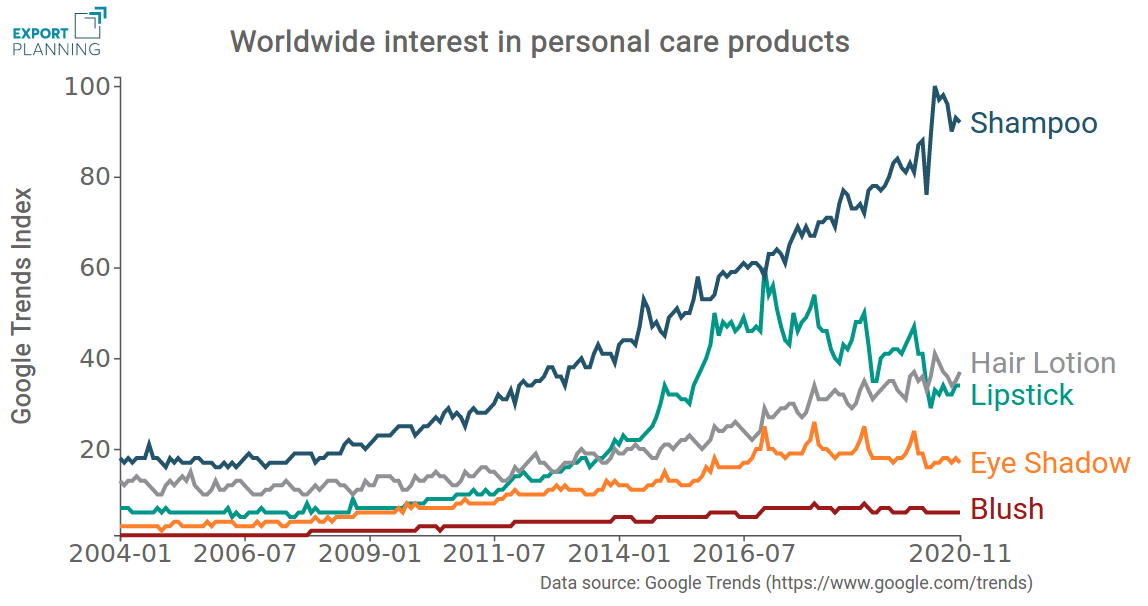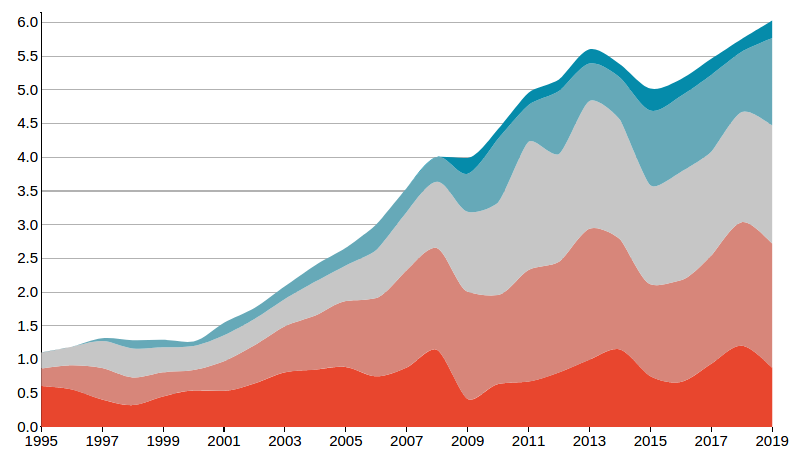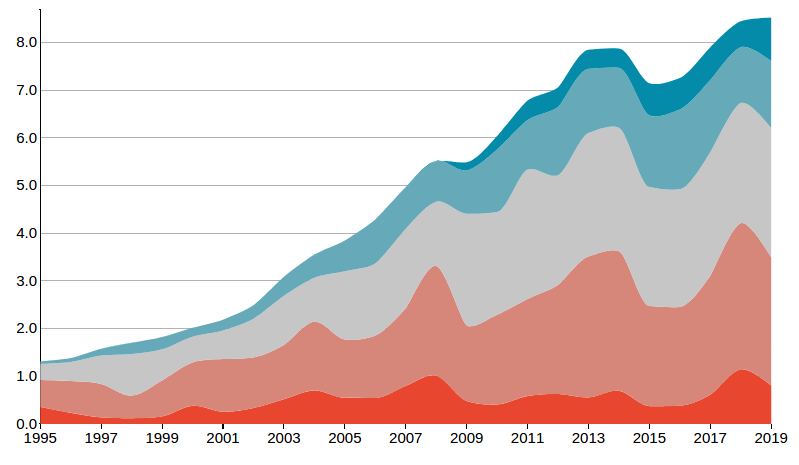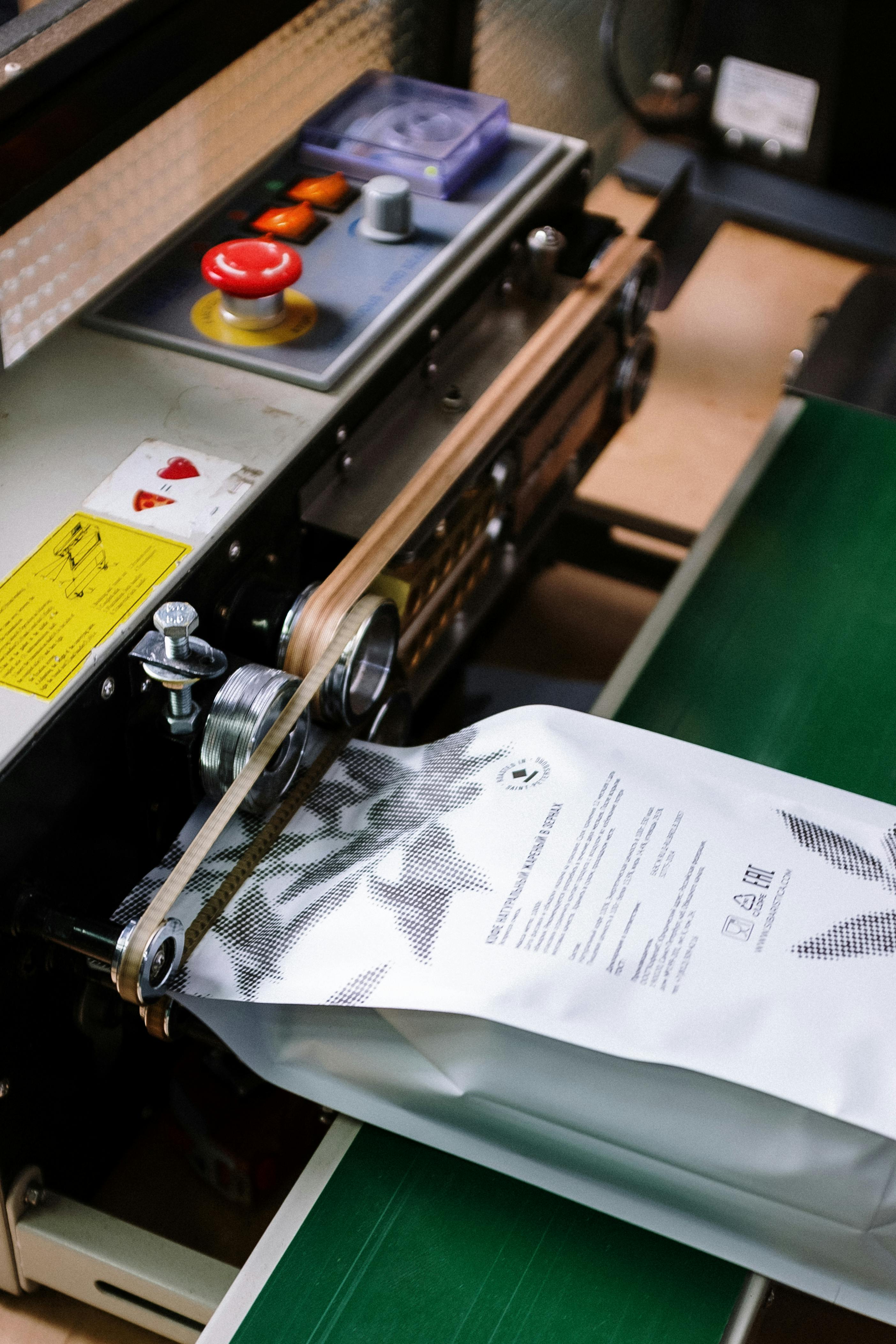How to Use ExportPlanning in the Planning Process
Hair care products: a case study
Published by Valerio Ronci. .
Planning Bestpractice Internationalisation Internationalisation toolsChanges in world trade
One of the factors that have characterised world trade in this century are the effects on flows due to changes in terms of lifestyle.
In the last 20 years, for example, attention to personal care has increased everywhere in the world. In this context, a particularly strong growth in hair care has been the main focus of attention. The evolution over time of the number of google searches for different personal care products bears witness to this shift.

Over the last 15 years, the growth in attention for shampoos has been disruptive, far outstripping all other beauty products. In recent years, hair lotions have also seen a sharp rise, surpassing lipsticks in second place. Although attention to eye shadows and blushes is increasing, their growth is not comparable to that of lotions and, above all, to that of shampoos.
Driven by changes in consumer preferences in different countries, world trade in shampoos, lotions and other hair care products has been growing at a sustained pace over the past 25 years.
Hair care products: world trade for quality/price ranges (billions of dollars)
Shampoo

Lotions and other hair products


It is also clear from the two graphs that the price ranges that have increased the most are those associated with the highest quality products.
In this context, Italian products of excellence can find significant growth paths on foreign markets.
Below is an account of a case I recently managed of the development of a process of internationalisation
of an Italian SME operating in the sector.
A case study
I have been contacted by an entrepreneur active in the cosmetics sector, in the segment of products for professional hairdressers.
Having no background in this sector, I hesitated to accept the assignment because I feared that I did not have adequate knowledge of the sector to guide the company in foreign markets.
Until then, I had used ExportPlanning only in the sectors I already knew well and I had proved its validity by verifying that the data produced by ExportPlanning were actually in line with the real state of the markets.
While undecided whether to accept the assignment, I took some time to think and then, at the end, I asked myself: I already know that ExportPlanning works, so why not use it as a guide even in the areas I know nothing about?
So I took up the challenge and accepted the assignment.
What follows is what happened and that further confirmed the validity of ExportPlanning.
Analysis and planning
I started from the Export Readiness Assessment module in order to give the entrepreneur an immediate idea of the company's readiness to export and to identify areas for improvement. Evaluating the potential of a company from an export point of view is fundamental to establish realistic expectations, undertake a sustainable path of growth and establish a relationship of trust with the entrepreneur from the beginning.
Then I identified the customs code of the products, converted it into the specific codes of ExportPlanning and used the Market Selection module. With this module I identified the list of top countries, i.e. those countries where the probability of success is higher.
At this point I selected the top 10 countries in the ranking and used the Market Research module. Thanks to this tool I could fully understand the characteristics of the top markets in terms of product, average prices charged, competitors, main importing and exporting countries, attractiveness of premium price products, etc., which all represent information of crucial importance.
After having used these 3 modules I had enough information to start drawing up the Export Business Plan and the Foreign Sales Plan.
Execution of the plan
Once the analysis and planning phase was finished, I presented the export project to the company. Both the entrepreneur and the rest of the staff were surprised by the amount of correct information I had about the business even though I was not an expert in the industry. The founder of the company and the staff confirmed that the information were correct and they learned market insights that they did not know. This gave me the opportunity to convince the entrepreneur that I was the right person to take their company abroad and I received the necessary resources to continue.
During the actual commercial activity I further verified that the data and information obtained from ExportPlanning were correct and this allowed me to achieve sales results in a shorter time and with lower costs.
Short time and low costs to reach sales targets are the issues that are most important to any entrepreneur. ExportPlanning is the tool that allows you to achieve both.


